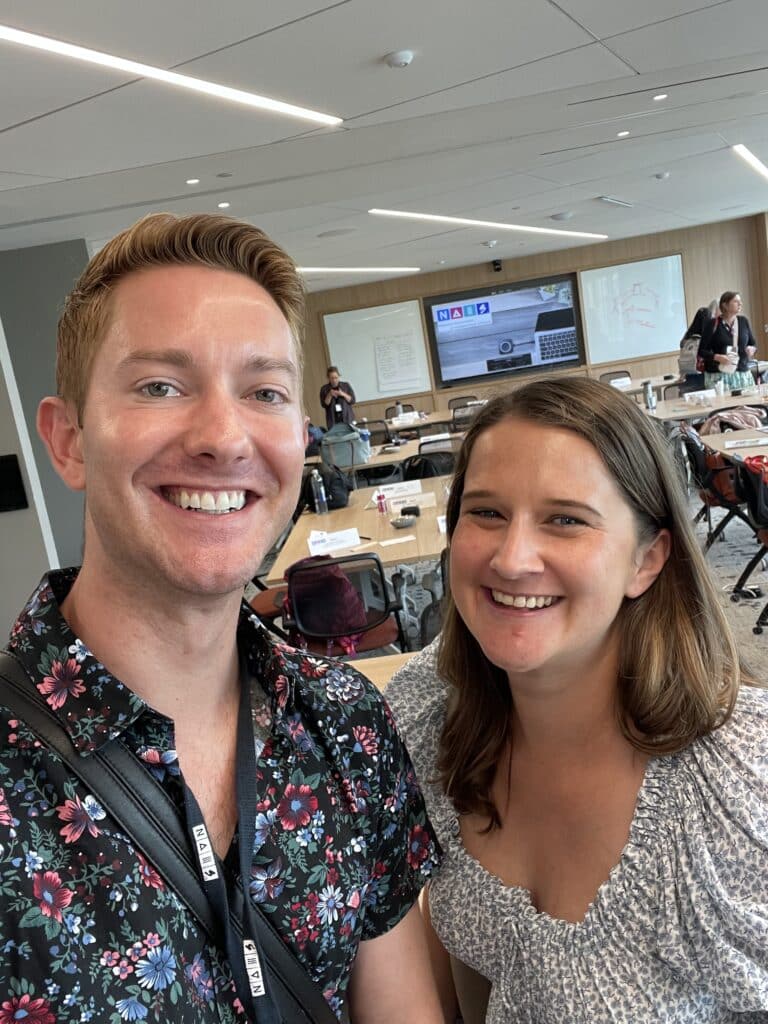Grading for Equity
September 9, 2024
 History Instructor Clair Dahm and English & Humanities Instructor Michael Szanyi were thrilled to represent Cate at the National Association of Independent Schools’ Equity Design Lab: Grading for Equity held July 10–12, 2024 at the NAIS Headquarters in Washington, DC. Through the support of Elana Stone, the Director of Diversity, Equity, and Inclusion at Cate, Clair and Michael were able to attend the summer institute as part of Cate’s ongoing fostering of belonging and inclusive teaching practices.
History Instructor Clair Dahm and English & Humanities Instructor Michael Szanyi were thrilled to represent Cate at the National Association of Independent Schools’ Equity Design Lab: Grading for Equity held July 10–12, 2024 at the NAIS Headquarters in Washington, DC. Through the support of Elana Stone, the Director of Diversity, Equity, and Inclusion at Cate, Clair and Michael were able to attend the summer institute as part of Cate’s ongoing fostering of belonging and inclusive teaching practices.
The three-day workshop explored 3 key areas: the history of grading and its impact on teaching, the three pillars of equitable grading, and the 11 core ways to make grading more equitable. Led by Joe Feldman, author of Grading for Equity, and Courtney Fenner, a facilitator through Feldman’s consulting firm the Crescendo Education Group, the workshop was an opportunity for educators across disciplines and from all types of independent schools to reflect on the “why, what, and how” of equitable grading.
Feldman states that “equitable grading is a research-based practice of reporting only a student’s understanding of the course content (standards). Compared to traditional grading practices, it is more accurate, bias-resistant, and motivational for students.” He views the work of implementing equitable practices more like ordering from a menu rather than using a step-by-step guide.
Clair and Michael loved connecting with colleagues across the country through various hands-on activities with gallery walls, jigsaws, group imaginings, and action research plans. However, what resonated with them most is how there continues to be a misalignment across the education system between “traditional grading practices” and current research on best practices.
The systems put in place during the Second Industrial Revolution meant to channel students toward career options and social classes for which they were deemed capable have not largely changed. For example, traditional practices suggest that intelligence is fixed and that using extrinsic motivation is the most effective means of influencing behavior. These systems do not serve all students equally, reinforcing existing privilege. Inevitably, there is a significant impact on student’s self-worth as they are focused on accumulating “points” rather than on learning.
Contemporary practices now believe that we have a commitment to serving all students and that all students can reach our standards. The goal is to keep as many paths open to students as possible, leaning into the much more effective use of intrinsic motivation. Learning is a process with multiple opportunities for students to demonstrate a skill, which can increase their sense of self-worth through a positive perception of their capacity to improve. Unfortunately, not all of the education system’s grading practices have quite caught up.
Cate has already been on a journey of implementing equitable grading such as using minimum grading and not using extra credit. Conversations across departments are already happening about other practices like not including homework in the grade (homework is meant to be a practice of making mistakes and learning from them so students should not be penalized for participating in the learning process) and including only individual achievement as evidence in grades (an individual student’s grades should not be based on the behavior of another student). Clair and Michael are excited to continue being a part of Cate’s process as they have already presented to the History and English Departments about the conference and are slated to present to the Math and Science Departments this fall.